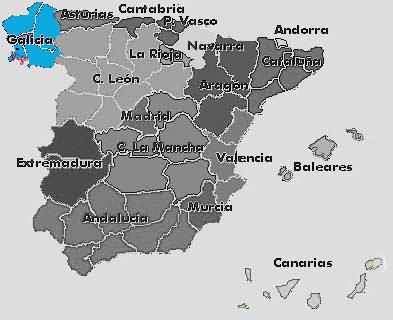
On October 10, 1997, I left Italy to go to Vigo, as a
winning student of the Socrates/Erasmus scholarship. I stayed there for
nine months, and the experience was totally positive. I've decided thus
to give some advice to whom has to go there, in order for him/her to know
better and earlier whom to contact, what to do and so on.
 |
Vigo is situated in the Atlantic Ocean, at about 40 kilometers from the Portuguese border. To reach it, there are a lot of means: by bus, by train or by plane. A good idea is to pass for Portugal (landing in Oporto) and, from there, to catch the train to Vigo using the Portuguese Railways (Caminhos de Ferro), which takes about 4 hours for 200 kilometers. Of course, there are direct routes, as Vigo has got an airport (of just one lane); in the same region, Galicia, there are two good airports: one in Santiago de Compostela, one hour far from Vigo, and one in A Coruña, almost 2h30 far from it. Both cities are connected by the Spanish Railways, RENFE (REd Nacional de Ferrocarriles Españoles). |